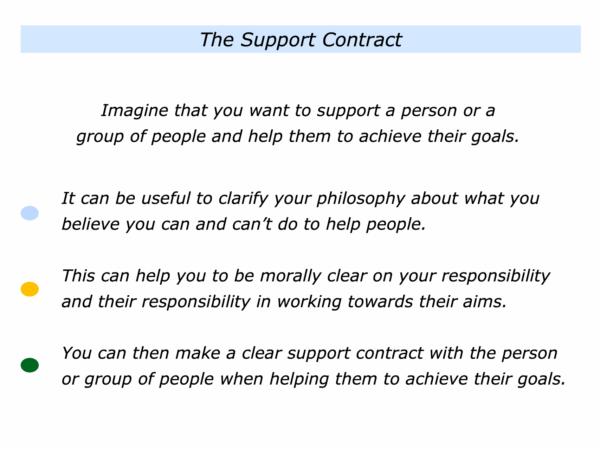
Imagine that you want to help others in your life and work. It can be important to be morally clear on what you can do to support a person or a group of people to help them to achieve their goals.
Imagine that you want to support people. It can be useful: a) to make a clear contract with yourself; b) to make a clear contract with others about the respective responsibilities in helping them to achieve their goals.
Some people care so much that sometimes they start taking over what are actually the other person’s responsibilities. This does not always help.
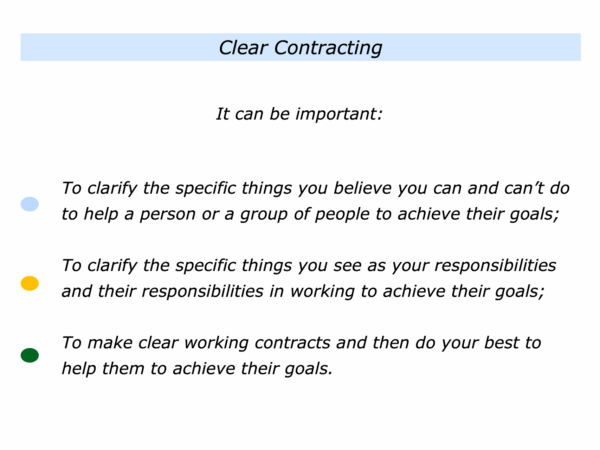
Different people identify different things when exploring these themes. Here are some they mention.
Can Do. The specific things I can do to support
people and help them to achieve their goals
I can aim:
To create an encouraging environment … To clarify what is happening in their world … To clarify the topics they want to explore … To invite them to focus on one of these topics … To clarify their specific goal.
To clarify their successful pattern in the past for achieving similar goals … To ask if it is okay for me to share some ideas … To focus on how they can follow their successful pattern to work towards achieving the goal.
To offer them practical tools that work … To see which of these ideas resonate and want to explore further … To, if appropriate, enable them to make an action plan that they believe in … To go onto the next topic they want to explore.
Can’t Do. The specific things I can’t do to support
people and help them to achieve their goals
I can’t:
Motivate them if they are not motivated … I can create a motivating environment and show what it is possible to achieve, but they must demonstrate the will before they can develop the skill.
Change things that are out of their control or my control … I can help them to build on what they can control and manage what they can’t, but there are certain things that are beyond our control.
Do the work for them or guarantee success … I can enable them to do their best and increase the chances of reaching their goals, but there may be other factors that influence whether they achieve their goals.
Good therapists, for example, also recognise what they can and can’t do for a client. They also recognise their responsibilities and the client’s responsibilities in working towards the client’s goals.
This is an approach that I learned early on when working with people. After explaining the ways I could help the person, it was important to make clear contracts about the respective responsibilities in the professional relationship.
My Responsibilities Were:
To prepare properly for the sessions … To be encouraging … To clarify the person’s goals … To build on their strengths … To focus on their possibilities … To always behave in a professional way … To do my best to help them to achieve their goals.
The Person’s Responsibilities Were:
To prepare for the sessions … To take responsibility … To clarify their goals … To take the ideas they like and apply these in their own ways … To do their best to work towards achieving their goals.
This was an approach I continued to use when working with individuals, teams and organisations in many walks of life. The aim was:
To show that I understood their picture of success;
To explain the practical ways I could try to help them to achieve their picture of success;
To make clear contracts about my role and their role in working towards achieving the picture of success.
Clear contracting is crucial in many relationships. We will explore this topic in greater depth later in the book.
Let’s return to your own life and work. Imagine that a person has asked for your personal support or your professional expertise in helping them to achieve their goals. Bearing in mind your philosophy about how people grow, try exploring the following themes.
What are the things you can to do help the person? What are the things you can’t do? What do you see as your responsibilities in helping them to achieve their goals? What do you see as their responsibilities?
If appropriate, how can you make clear contracts about the respective responsibilities? How can you then do your best to help them to achieve their goals?
If you wish, try tackling the exercise on this theme. This invites you to complete the following sentences.
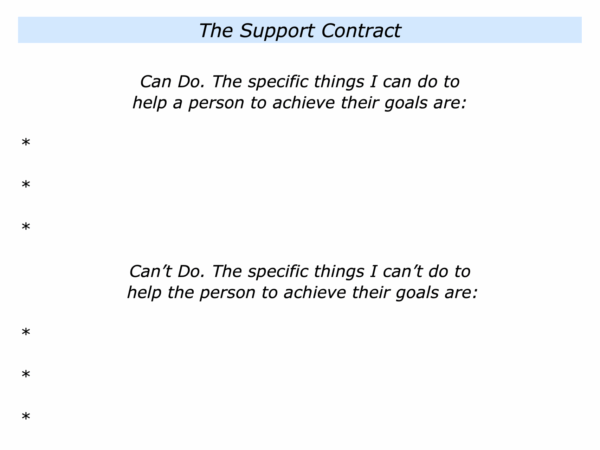
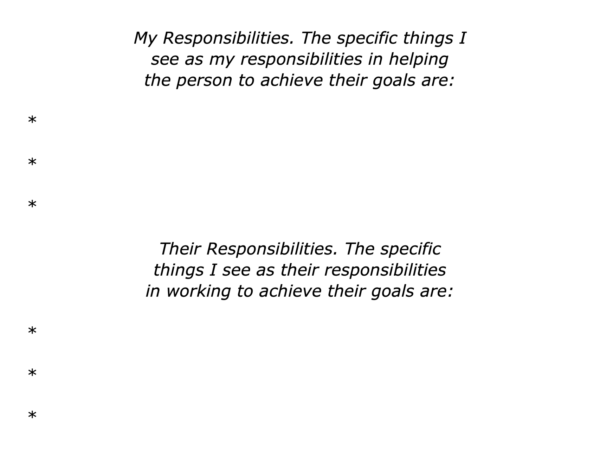
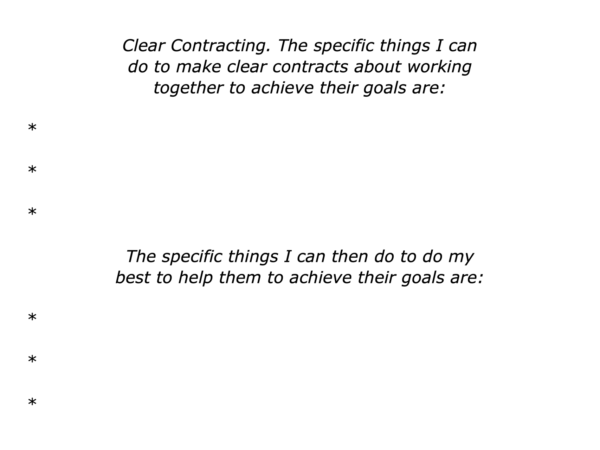


Leave a Reply